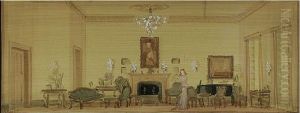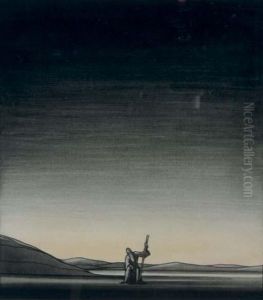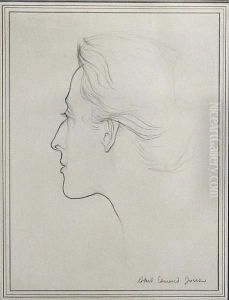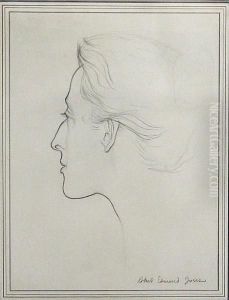Robert Edmond Jones Paintings
Robert Edmond Jones was an influential American scenic, costume, and lighting designer. He is considered one of the pioneers of modern American theater design and has been credited with bringing the New Stagecraft movement to America. Born on December 12, 1887, in Milton, New Hampshire, Jones showed an early interest in the arts and pursued his passion through education and practice.
After studying at Harvard University, where he was influenced by the lectures of George Pierce Baker, Jones moved on to further his education in scenic design in Europe. During his time abroad, he was particularly inspired by the innovations of European designers like Adolphe Appia and Gordon Craig, who were breaking away from the traditional painted backdrops and elaborate sets that dominated the stage at the time.
Jones's career took off in the 1910s and 1920s when he began designing for Broadway productions. His innovative approach to design emphasized simplicity and the use of symbolic elements to suggest rather than depict realistic settings. He was known for his ability to use lighting and minimalistic set pieces to create atmosphere and mood, which was a dramatic shift from the more literal and detailed scenery that had been popular before his time.
Some of his notable works include the sets and costumes for the original 1928 production of Eugene O'Neill's play 'Strange Interlude,' and the 1923 production of 'Hamlet' starring John Barrymore. Jones's designs for these and other productions were marked by their elegance and their ability to convey the essential emotional and thematic elements of the play without unnecessary ornamentation.
Throughout his career, Jones also wrote extensively on theater design, contributing to the education and development of future designers. His influence extended through his teaching at the Yale School of Drama, where he helped to train the next generation of designers.
Robert Edmond Jones's contributions to theater were not limited to design; he also played a role in the development of American drama, working closely with playwrights and directors to create a new form of theater that was distinctly American in its expression.
Jones continued to work in theater until his death on November 26, 1954. His legacy is preserved in the countless designers he influenced and in the aesthetic principles that underpin modern theater production design. Through his vision, he helped to transform American theater and ensure that design was recognized as a vital component of dramatic storytelling.




